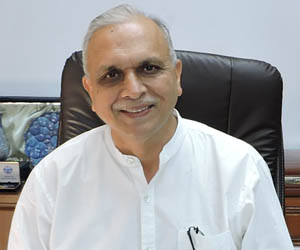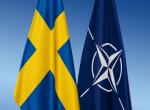Prime Minister Modi’s surprise visit to a military base near Leh close to the India-China border on 3rd July was a turning point in the nine weeks old Indian military India China military face of which remains unresolved despite several rounds of military commander level and official level political negotiations. Significantly, the Prime Minister was accompanied on the trip by the Chief of Defence Staff and the Chief of Army Staff.
In one stroke the visit has transformed the military skirmish into a much wider strategic competition between India and China, which had been downplayed earlier. Although Modi did not name China in his speech, it was clear that the government is fully alive to the challenge that China is posing to India.
Modi’s address was meant to rally the troops, raise the morale of the Armed Forces, reassure the nation about Indian defence capabilities and send out a message to the outside world that India will stand up to Chinese pressure and bullying.
There were four major takeaways from Modi’s speech delivered as he addressed the troops, paid tribute to their bravery. One, India believes in the paradigm of development; second, it will resist expansionism (read China); three, Indian Armed Forces are well prepared to meet any challenge on the borders; four, India stands for peace but that should not be mistaken for its weakness. These points will form the basis of the Indian narrative for the world.
The speech also set at rest the needless controversies generated in the media whether the Chinese had intruded into in the Indian territory or not.
The question is what next?
A worried Chinese foreign office was quick to react to Modi’s visit. A spokesperson of the Chinese foreign office, answering a query from Kyodo news agency, said that, “China and India are in communication with each other through military and diplomatic channels. Neither side should make any move that may complicate the border situation.” In response to another query from the PTI on the Chinese reaction to the Indian ban on Chinese mobile apps, the spokesperson said that India should not make a “strategic miscalculation” and both sides should follow the “consensus” between the two leaders. Chinese narrative is likely to evolve in the coming days and weeks.
Modi’s speech has raised the bar for China. India is insisting that China should return to status quo ante which prevailed in May before the first scuffles between the troops took place. China has in the last few weeks resorted to military build-up along the LAC. India has responded accordingly. In future discussions, it is likely that India would insist that the line of actual control be demarcated and the boundary issue be settled. However, that is still a far cry.
Modi’s visit was well-timed. China is coming under diplomatic pressure from all sides. Australia's 2020 Defence Strategic Update and the Associated Force Structure Plan alludes to China as a threat. The Japanese have also sided with India on the India China face off. Japan opposes any unilateral attempts to change the status quo. A war of words has broken out between the US and China. Even the ASEAN has woken up and told China to follow the UNCLOS convention insofar as South China Sea is concerned. Several countries have criticised China for its national security law for Hong Kong under which initial arrests have been made. The law contravenes the one country two systems to which the Chinese had agreed. Britain has announced that it will take 2.5 million Hong Kong residents as British citizens.
Sino Indian tensions will likely escalate in the coming weeks as the impasse continues and both sides build their military strengths along the border. The media is already beginning to paint scenarios ranging from military skirmishes to limited war and even a full-scale war between the two sides. India should also be alive to the two-front situation when Pakistan, in order to help China, raises the heat on the line of control.
The practical option for India would be that it stands firm, rallies international support for its cause, addresses the gaps in defence preparedness and keeps the door open for negotiations while being ready for any military escalation. It is also necessary that a realistic assessment of the Chinese intents and capabilities is made. Proper intelligence and strategic assessments will be needed.
For the Chinese, a military skirmish would be counter-productive. It is unlikely that after what happened at Galwan and Pangong Tso and some other areas, they would be able to make any fresh territorial intrusions with Indian Army fully alert. At the Galwan incident, they suffered heavy casualties which they have not yet specified. They are facing a well-equipped, battle hardened Indian Army whereas their troops lack recent fighting experience.
Dealing with China will require a coordinated approach on multiple fronts. On the diplomatic front, India should aim for the isolation of China by building a narrative in which it retains the high ground and exposes China as an expansionist power. Its human rights record in Tibet, Hong Kong, Xinjiang should also be exposed. India could also upgrade its relations with Taiwan and engage more openly with the Dalai Lama.
India should leverage the various strategic partnerships it has built over the years to put pressure on China. For instance, it can receive valuable intelligence from its partners on land and maritime fronts.
China has deep suspicions about the Quad and India’s relations with the US and Japan in particular. India should shed its inhibitions concerning the Quad. It should convene a meeting of the foreign minsters to discuss Chinese expansionism. Joint statement should be issued. A forthcoming G10/G11 meeting being convened by the US could also be used as a platform to talk about expansionism in modern times.
The Indian narrative should be shared widely with other countries and the media. Countries in the neighbourhood where China have made deep inroads should be engaged.
Russia will need special focus as in the Sino Indian dispute, it is likely to remain neutral. But it is open to supplying arms and munitions to India. The Indian decision to buy 31 jet planes from Russia is a positive step. If Russia remains engaged with India, this could be a constraint on China.
Given China’s outreach to the rest of the world through belt and road and other such initiatives, it is likely that not everyone would support India openly because of their relations with China. However, securing their neutrality will itself be a big diplomatic gain for India.
In the end, India will have to deal with China on its own. But, it should spare no effort to secure as much diplomatic support as possible.
It is also essential that the country should be united. Here, the political parties and the media have the key responsibility. This is the time to rally the country as one and not score political points over each other. The government and the armed forces need to be supported fully at this time of the hour while questions can wait.
The public will support the government if the Chinese are seen as aggressors. There intentions and motives should be acknowledged and laid bare. The government, to the extent possible, should take the public on board. Proper and timely briefings are important.
(The paper is the author’s individual scholastic articulation. The author certifies that the article/paper is original in content, unpublished and it has not been submitted for publication/web upload elsewhere, and that the facts and figures quoted are duly referenced, as needed, and are believed to be correct). (The paper does not necessarily represent the organisational stance... More >>
Image Source: https://www.pmindia.gov.in/en/image-gallery/











Post new comment